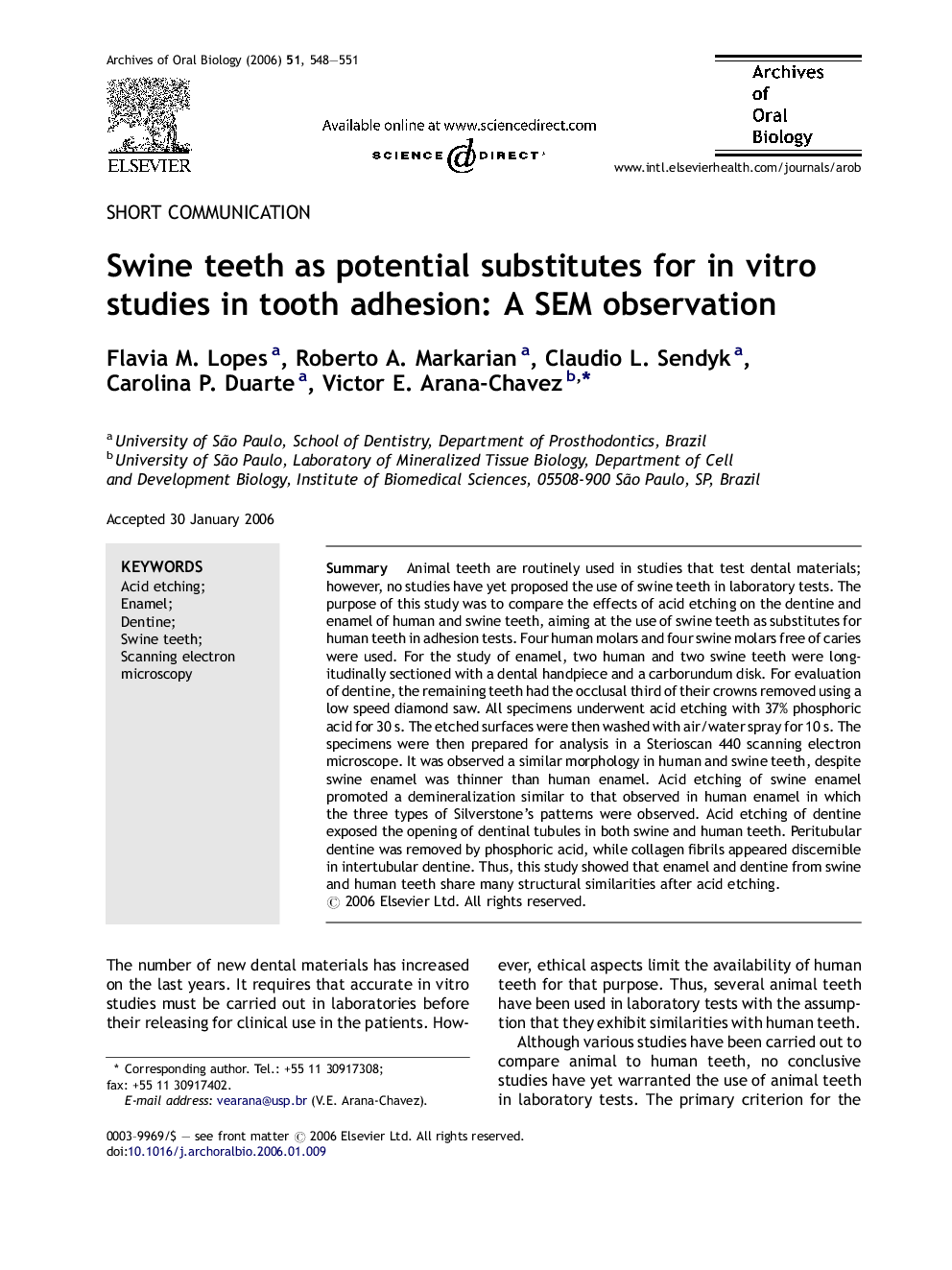| Article ID | Journal | Published Year | Pages | File Type |
|---|---|---|---|---|
| 3121873 | Archives of Oral Biology | 2006 | 4 Pages |
SummaryAnimal teeth are routinely used in studies that test dental materials; however, no studies have yet proposed the use of swine teeth in laboratory tests. The purpose of this study was to compare the effects of acid etching on the dentine and enamel of human and swine teeth, aiming at the use of swine teeth as substitutes for human teeth in adhesion tests. Four human molars and four swine molars free of caries were used. For the study of enamel, two human and two swine teeth were longitudinally sectioned with a dental handpiece and a carborundum disk. For evaluation of dentine, the remaining teeth had the occlusal third of their crowns removed using a low speed diamond saw. All specimens underwent acid etching with 37% phosphoric acid for 30 s. The etched surfaces were then washed with air/water spray for 10 s. The specimens were then prepared for analysis in a Sterioscan 440 scanning electron microscope. It was observed a similar morphology in human and swine teeth, despite swine enamel was thinner than human enamel. Acid etching of swine enamel promoted a demineralization similar to that observed in human enamel in which the three types of Silverstone's patterns were observed. Acid etching of dentine exposed the opening of dentinal tubules in both swine and human teeth. Peritubular dentine was removed by phosphoric acid, while collagen fibrils appeared discernible in intertubular dentine. Thus, this study showed that enamel and dentine from swine and human teeth share many structural similarities after acid etching.
